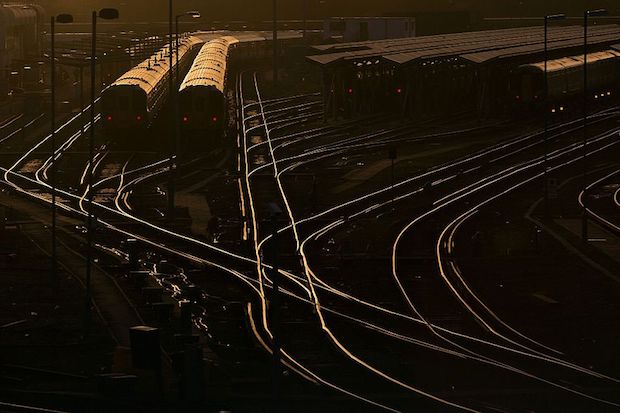‘I went to a restaurant the other day called Taste of the Raj. The waiter hit me with a stick and got me to build a complicated railway system.’ The comedian Harry Hill’s gag is an acerbic commentary on the British empire, but there can be no doubt that India’s modern history is intimately intertwined with its railways. They grew into a vast realm of their own within the sub-continent and embodied all the vagaries of imperial rule.
Who better to chronicle them than Christian Wolmar? He is a railway obsessive who has now produced his 11th book on rail and its history. This time round he has given himself one of the greatest train sets any boy ever had to play with.
The story he tells begins in the mid-19th century with a series of formidable engineering challenges. They came at a high human cost. Most notorious of all was the line through the Western Ghats, the mountains which run parallel to India’s west coast. Their traverse claimed 25,000 lives, the highest ever death toll for a railway project.
There were various motivations for building the network. Hauling off the spoils of colonialism came first. The ability to transport troops rapidly was important, especially following the Mutiny of 1857. Less obviously, famine relief was another driver, although, as Wolmar says, on occasion food was actually carried away from starving regions to be sold elsewhere, exacerbating the plight of locals.
Yet it is a mistake to be too cynical. As Wolmar writes, when the Victorians said they were building the railways as part of their mission to civilise India, they meant it. In practice, regrettably, rail benefitted the British considerably more than their subjects. Indians travelled mostly in third and fourth class, often in grotesquely overcrowded carriages where, as late as the second world war, toilets were frequently absent. First-class travel, meanwhile, was almost entirely the preserve of Europeans and probably the world’s most luxurious transport for the time.
Employment on the railways further underlined racial divides. Jobs were reserved for Anglo-Indians, or those of mixed race. I should declare an interest here, because my grandfather Bertram (‘Bertie’) worked for the Bombay, Baroda &Central Indian Railway Company right up to independence, rising from apprentice boilerman to the heights of foreman engineer. The family home was in Ajmer, Rajasthan. It was a spacious bungalow in the city’s railway cantonment, with half a dozen servants of varying fidelity. Bertie wore suits of white cotton drill and smoked Cuban cigars. Until he mastered his Citröen, a chauffeur started the engine with a hand crank and conveyed the family around. Wolmar does not mention Bertie, alas, but he is certainly correct in stating that reserved employment aroused resentment.
The railways were central to the tragic events surrounding independence. Refugees fleeing by rail were slaughtered en masse, Hindu and Muslim alike. My mother tells of seeing a train pull into Ajmer station, carriage doors opening and blood flooding out all over the platform. The family fled to Britain, where Bertie maintained his cigar consumption in defiance of austerity and high blood pressure.
Wolmar is a staunch advocate of nationalised railways. He huffs and puffs about the depredations of the private companies that built and ran India’s networks, with details of how early versions of PFI looted Indian resources. But there is an elephant in the waiting room: it could never have been otherwise, because exploitation was synonymous with empire. Similarly, in consequence it was inevitable that the Indians would favour nationalisation, regardless of any intrinsic merits.
Wolmar acknowledges gracefully that his single volume can be no more than a primer. The railways’ engineering, commerce and politics all demand books of their own. Even so, he presents an engaging and welcome account of this magnificent institution and its dramatic history up to the present day.
After independence, steam surrendered to diesel and electricity, but many wonderful eccentricities survive. If buying a ticket without assistance remains a rash under-taking, the railways are still the most enjoyable way to travel in India. Even now you can — and, at least once in your life, you must — sit yourself down in a carriage doorway, feet dangling, chai at hand, and watch Mother India pass by in all her chaotic splendour.






Comments